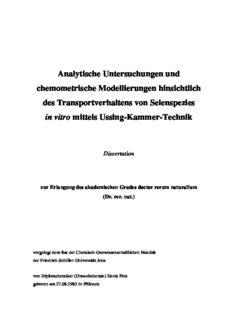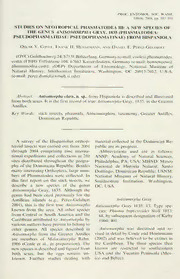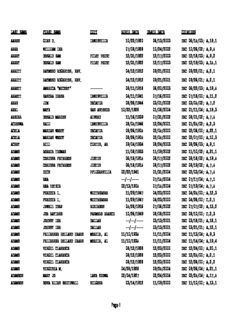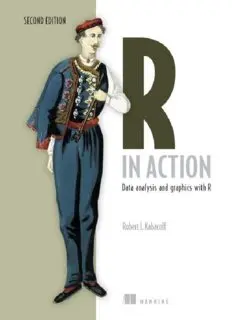
R in Action: Data Analysis and Graphics with R PDF
Preview R in Action: Data Analysis and Graphics with R
R in Action, Second Edition: Data analysis and graphics with R Robert Kabacoff Copyright For online information and ordering of this and other Manning books, please visit www.manning.com. The publisher offers discounts on this book when ordered in quantity. For more information, please contact Special Sales Department Manning Publications Co. 20 Baldwin Road PO Box 761 Shelter Island, NY 11964 Email: orders@manning.com ©2015 by Manning Publications Co. All rights reserved. No part of this publication may be reproduced, stored in a retrieval system, or transmitted, in any form or by means electronic, mechanical, photocopying, or otherwise, without prior written permission of the publisher. Many of the designations used by manufacturers and sellers to distinguish their products are claimed as trademarks. Where those designations appear in the book, and Manning Publications was aware of a trademark claim, the designations have been printed in initial caps or all caps. Recognizing the importance of preserving what has been written, it is Manning’s policy to have the books we publish printed on acid-free paper, and we exert our best efforts to that end. Recognizing also our responsibility to conserve the resources of our planet, Manning books are printed on paper that is at least 15 percent recycled and processed without elemental chlorine. Manning Publications Co. Development editor: Jennifer Stout 20 Baldwin Road Copyeditor: Tiffany Taylor PO Box 761 Proofreader: Toma Mulligan Shelter Island, NY 11964 Typesetter: Marija Tudor Cover designer: Marija Tudor ISBN: 9781617291388 Printed in the United States of America 1 2 3 4 5 6 7 8 9 10 – EBM – 20 19 18 17 16 15 Brief Table of Contents Copyright Brief Table of Contents Table of Contents Praise for the First Edition Preface Acknowledgments About this Book About the Cover Illustration 1. Getting started Chapter 1. Introduction to R Chapter 2. Creating a dataset Chapter 3. Getting started with graphs Chapter 4. Basic data management Chapter 5. Advanced data management 2. Basic methods Chapter 6. Basic graphs Chapter 7. Basic statistics 3. Intermediate methods Chapter 8. Regression Chapter 9. Analysis of variance Chapter 10. Power analysis Chapter 11. Intermediate graphs Chapter 12. Resampling statistics and bootstrapping 4. Advanced methods Chapter 13. Generalized linear models Chapter 14. Principal components and factor analysis Chapter 15. Time series Chapter 16. Cluster analysis Chapter 17. Classification Chapter 18. Advanced methods for missing data 5. Expanding your skills Chapter 19. Advanced graphics with ggplot2 Chapter 20. Advanced programming Chapter 21. Creating a package Chapter 22. Creating dynamic reports Afterword Into the rabbit hole Appendix A. Graphical user interfaces Appendix B. Customizing the startup environment Appendix C. Exporting data from R Appendix D. Matrix algebra in R Appendix E. Packages used in this book Appendix F. Working with large datasets Appendix G. Updating an R installation References Index List of Figures List of Tables List of Listings Table of Contents Copyright Brief Table of Contents Table of Contents Praise for the First Edition Preface Acknowledgments About this Book About the Cover Illustration 1. Getting started Chapter 1. Introduction to R 1.1. Why use R? 1.2. Obtaining and installing R 1.3. Working with R 1.3.1. Getting started 1.3.2. Getting help 1.3.3. The workspace 1.3.4. Input and output 1.4. Packages 1.4.1. What are packages? 1.4.2. Installing a package 1.4.3. Loading a package 1.4.4. Learning about a package 1.5. Batch processing 1.6. Using output as input: reusing results 1.7. Working with large datasets 1.8. Working through an example 1.9. Summary Chapter 2. Creating a dataset 2.1. Understanding datasets 2.2. Data structures 2.2.1. Vectors 2.2.2. Matrices 2.2.3. Arrays 2.2.4. Data frames 2.2.5. Factors 2.2.6. Lists 2.3. Data input 2.3.1. Entering data from the keyboard 2.3.2. Importing data from a delimited text file 2.3.3. Importing data from Excel 2.3.4. Importing data from XML 2.3.5. Importing data from the web 2.3.6. Importing data from SPSS 2.3.7. Importing data from SAS 2.3.8. Importing data from Stata 2.3.9. Importing data from NetCDF 2.3.10. Importing data from HDF5 2.3.11. Accessing database management systems (DBMSs) 2.3.12. Importing data via Stat/Transfer 2.4. Annotating datasets 2.4.1. Variable labels 2.4.2. Value labels 2.5. Useful functions for working with data objects 2.6. Summary Chapter 3. Getting started with graphs 3.1. Working with graphs 3.2. A simple example 3.3. Graphical parameters 3.3.1. Symbols and lines 3.3.2. Colors 3.3.3. Text characteristics 3.3.4. Graph and margin dimensions 3.4. Adding text, customized axes, and legends 3.4.1. Titles 3.4.2. Axes 3.4.3. Reference lines 3.4.4. Legend 3.4.5. Text annotations 3.4.6. Math annotations 3.5. Combining graphs 3.5.1. Creating a figure arrangement with fine control 3.6. Summary Chapter 4. Basic data management 4.1. A working example 4.2. Creating new variables 4.3. Recoding variables 4.4. Renaming variables 4.5. Missing values 4.5.1. Recoding values to missing 4.5.2. Excluding missing values from analyses 4.6. Date values 4.6.1. Converting dates to character variables 4.6.2. Going further 4.7. Type conversions 4.8. Sorting data 4.9. Merging datasets 4.9.1. Adding columns to a data frame 4.9.2. Adding rows to a data frame 4.10. Subsetting datasets 4.10.1. Selecting (keeping) variables 4.10.2. Excluding (dropping) variables 4.10.3. Selecting observations 4.10.4. The subset() function 4.10.5. Random samples 4.11. Using SQL statements to manipulate data frames 4.12. Summary Chapter 5. Advanced data management 5.1. A data-management challenge 5.2. Numerical and character functions 5.2.1. Mathematical functions 5.2.2. Statistical functions 5.2.3. Probability functions 5.2.4. Character functions 5.2.5. Other useful functions 5.2.6. Applying functions to matrices and data frames 5.3. A solution for the data-management challenge 5.4. Control flow 5.4.1. Repetition and looping 5.4.2. Conditional execution 5.5. User-written functions 5.6. Aggregation and reshaping 5.6.1. Transpose 5.6.2. Aggregating data 5.6.3. The reshape2 package 5.7. Summary 2. Basic methods Chapter 6. Basic graphs 6.1. Bar plots 6.1.1. Simple bar plots 6.1.2. Stacked and grouped bar plots 6.1.3. Mean bar plots 6.1.4. Tweaking bar plots 6.1.5. Spinograms 6.2. Pie charts 6.3. Histograms 6.4. Kernel density plots 6.5. Box plots 6.5.1. Using parallel box plots to compare groups 6.5.2. Violin plots 6.6. Dot plots 6.7. Summary Chapter 7. Basic statistics 7.1. Descriptive statistics 7.1.1. A menagerie of methods 7.1.2. Even more methods 7.1.3. Descriptive statistics by group 7.1.4. Additional methods by group 7.1.5. Visualizing results 7.2. Frequency and contingency tables 7.2.1. Generating frequency tables 7.2.2. Tests of independence 7.2.3. Measures of association 7.2.4. Visualizing results 7.3. Correlations
The list of books you might like

The 48 Laws of Power

Believe Me

The Spanish Love Deception

A Thousand Boy Kisses

Israeli-Turkish Tensions and their International Ramifications

Psicologia dello sviluppo IV

Union Government, Weekly, 2006-01-28, Part II-Section 3-Sub-Section(ii), Ref. 284-378
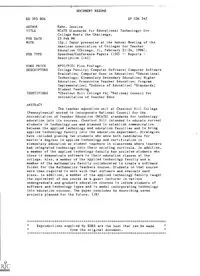
ERIC ED393806

IT-Governance als Teil der organisationalen Governance: Ausgestaltung der IT-Entscheidungsrechte am Beispiel der öffentlichen Verwaltung

The Wall Street Journal - 11 06 2020
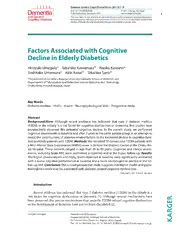
Factors Associated with Cognitive Decline in Elderly Diabetics.
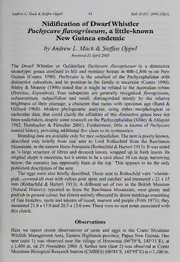
Nidification of Dwarf Whistler Pachycare flavogriseum, a little-known New Guinea endemic

Historical Live Cattle/Feeder Cattle Report

Karyotypes of the Neotropical pseudoscorpions Semeiochernes armiger and Cordylochernes scorpioides (Pseudoscorpiones: Chernetidae)

joint assessment mission
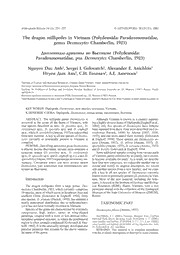
The dragon millipedes in Vietnam (Polydesmida: Paradoxosomatidae, genus Desmoxytes Chamberlin, 1923)

NASA Technical Reports Server (NTRS) 20060018369: Aeroacoustic Improvements to Fluidic Chevron Nozzles

Fiscal Year 1985 Groundwater Investigation Drilling Program at the Y-12 Plant, Oak Ridge, Tennessee
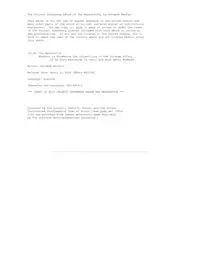
The Masterfolk by Haldane Macfall

The White Lie by William Le Queux
